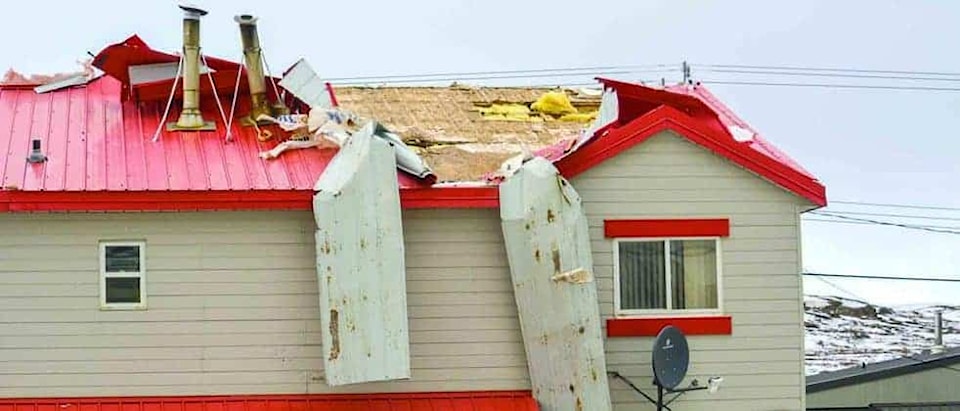Destructive winds hit Baffin Island on Oct. 4, sending sheet metal roofing flying into power infrastructure and causing outages across Iqaluit and Cape Dorset.
Qulliq Energy Corp worked to restore power and sent line crews to patrol the distribution system for any issues overnight.
In Cape Dorset, the severe weather left part of the community without power, but crews were unable to make repairs due to safety concerns. By 11 a.m. Friday, Qulliq had restored power.
On Friday morning, the siding and roofs of several buildings littered downtown Iqaluit and blocked off the main four corners intersection.
The winds overturned sheds in the Plateau neighbourhood, hurled sheet metal debris onto vehicles and bent stop signs sideways.
One man made a plea in the Iqaluit Public Service Announcements Facebook group to reunite him with his car mirror, if anyone had spotted it.
Another posted looking for replacement glasses – his flew off in Apex.

Iqalungmiut posted online that several transformers had gone up in sparks and gravel and debris had damaged car and home windows.
Many businesses and schools in Iqaluit closed all day Friday while crews worked to clear debris and destroyed infrastructure.
Flights to Clyde River, Cape Dorset, Pangnirtung, Hall Beach, Qikiqtarjuaq and Kuujjuaq were cancelled.
The highest measured winds were at 124 km/h in Iqaluit, 113 km/h in Pangnirtung, 97 km/h in Kimmirut and 83 km/h in Cape Dorset, said Environment Canada meteorologist Brian Proctor.
"It was the perfect storm," he said, adding the winds over Pangnirtung and Iqaluit would have been stronger over water.
The storm resulted from the same system that pummelled Calgary with snow last week, Proctor said.
The low-pressure system travelled eastward and met with cold air over Hudson Bay.
"It's not uncommon for us to see strong winds this time of year," he said.
None of the winds exceeded historical highs. The last time Iqaluit saw winds higher than 125 km/h was Feb. 4, 2007 at 135 km/h.
Pangnirtung saw similarly high winds in January 2016.
Cape Dorset had not exceeded winds of 83 km/h since December 2010.
"I have seen storms (in Iqaluit) that have done more damage, from what we can see on Twitter," he said.
Some historical high winds in Nunavut have been significant enough to blow cargo containers down streets, said Proctor.
Typically Southern Baffin sees such high winds in the winter, when the communities are prone to "high amplitude weather phenomena oscillating from one extreme to another," he said.
